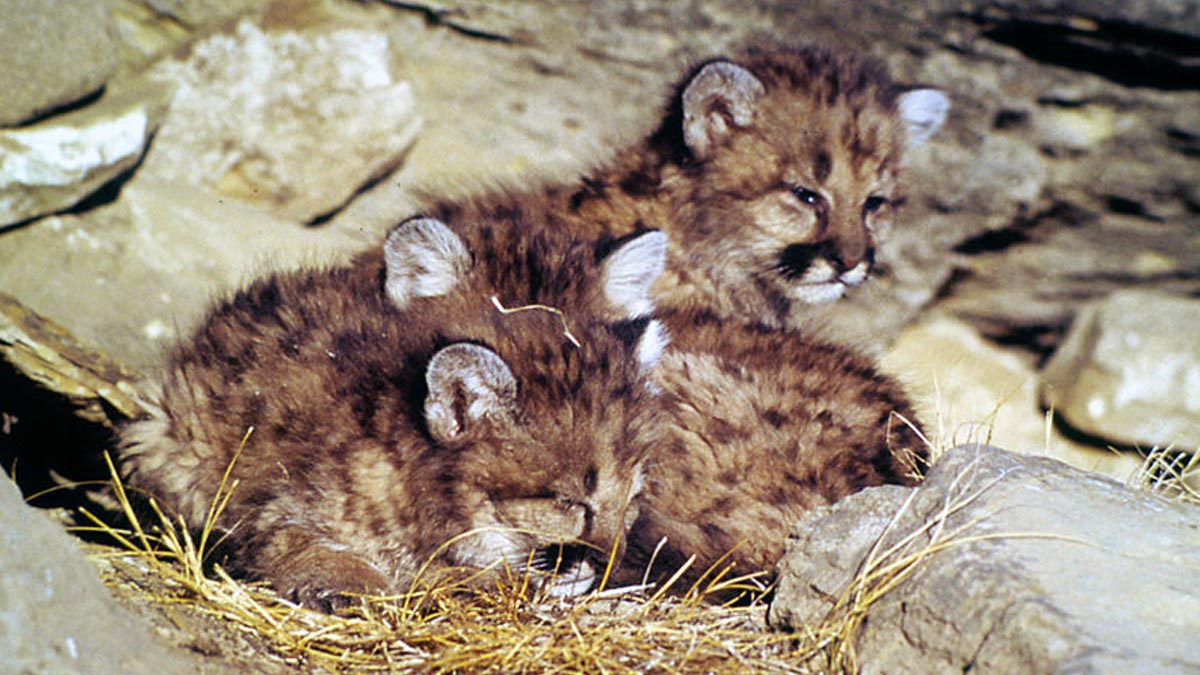
When pumas are born, they are usually born in a litter, typically one to six puma cubs in each litter.
Can you guess what he is? With his spots and stripes you probably think he is a cheetah cub, or a tiger or leopard. Well, he’s a puma, also known as a cougar or mountain lion. When he’s older he’ll lose most of those spots and stripes and have a solid tan color, like his parents!
Pumas are large cats, which are native to North America. When pumas are born, they are usually born in a litter (just like your cats at home!). Typically there are one to six puma cubs in each litter.
Baby pumas are kept within their maternal dens, caves or alcoves, a place closely surrounded with bushes, rocks, and trees. In order for the mothers to provide their baby pumas a comfortable bed, they gather brush from grasses, leaves and foliage to cover the ground.
After birth, baby pumas have visible rings on their tails and spots on their fur. They have blue eyes –although they are technically blind when they are born. Their rings and spots start to disappear when the cub reaches six months old, and will totally be out of sight when they reach one year of age. Baby pumas usually weigh more than a pound upon birth and measures around twelve inches long.
They depend on their mother’s milk for their main nutrition for at least three months. Raising baby pumas is a sole responsibility of the mother. This makes the cubs have a close relationship with their mother while they are young. Usually, the mother puma will hide her cubs in a safe place before she goes out to hunt for food. She does this to ensure the total protection of her young while she is away.
The cubs start practicing their hunting skills as soon as they grow older, with their mother accompanying them. This will start when the baby puma reaches six weeks old. It is their instinct to go out and hunt. It is normal for cubs to hunt for small prey on their own when they turn six months old. Their ever-protective mother will keep a protective eye on them as they try to catch prey for the first time. This is the time when they learn the best prey to consider for food and the right tactics and strategies in catching them. Baby pumas will stay with their mom until they reach one and half years old.